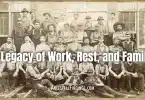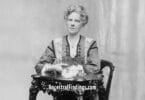Back in the late 1600s, tensions between New England colonists and Indians were growing due to expansion by the colonists into Indian territory, and their general bad treatment by the colonists. This was particularly true in New Hampshire, where people from Massachusetts were beginning to move in search of more open spaces. With tens of thousands of people immigrating from England beginning in 1620 and going strong through the 1660s, Massachusetts was becoming crowded.
The migration of people into New Hampshire displaced local Indians, and tensions between settlers and the indigenous population were high. This situation wasn’t helped by the attitudes of a few community leaders who took the view that the Indians were a nuisance and that it was the God-given right of the settlers to be there. A couple of supposed peace meetings that turned into massacres of the Indians by the settlers set the tone for Native/settler relations for a generation.
The local Indians began targeting people who were out in the open alone, and who seemed vulnerable. Sometimes, they killed women and children to prove a point to the men of the community. Other times, they kidnapped them (and even poorly armed men who were alone). When they kidnapped them, they took them to Canada, where they sold their captives to the French. The French had been trading in furs in the Americas since a generation before the Mayflower and were well acquainted with the Natives.
Unlike the English settlers, who tried to push out the Natives and/or convert them to their religion, the French enjoyed good relations with the Native American population. They took the time to learn their languages and treated them with respect, looking at them as the rightful owners of the land, and at themselves as merely guests there. The Natives appreciated this. Selling English captives as slaves to the French in Canada was a way for the Indians to thank the French for their friendship and benefit themselves economically at the same time.
In at least two incidences, however, it was not merely isolated cases of kidnapping that brought English captives to Canada. The town of Dover, New Hampshire saw a full-scale massacre of its citizens twice, both in the late 1600s. In the first and most memorable massacre, which took place in 1689, 23 people were killed and 29 taken captive. The captives were divided into two groups which followed different routes to Canada. One group was intercepted the next day by a search party led by a local settler who the Indians respected. He was able to negotiate the release and return of the captives (in fact, his house was the only one not targeted in the massacre).
The other group went to Canada and were sold to the French. Only one of them ever came back… a child who did not return until she was a grown woman, a widow with children she left behind in Canada. The rest stayed in Canada, changed their names, converted to Catholicism, and married into French families. This was the normal fate of those who were sold to the French in Canada.
The woman who returned enjoys some measure of local fame in Dover and in Salem, Massachusetts, where she later moved. She was born Margaret Otis but was re-christened Christine when her captive mother converted to Catholicism and married a Frenchman in Canada. After her husband died, she escaped back to Dover with Captain Thomas Baker, who she married and had several children with. She tried several times to get her first three children back from Canada but was never able to do so. She was also re-baptized back into the Puritan church when she returned to Dover.
While the Indian abductions of colonists in New Hampshire continued into the 1720s, there was never such a large-scale massacre and abduction as the one that took place in 1689. The French were not inclined to let their captives go back to the colonies, as they were in a rivalry with England over land in the Americas. However, a small number of captives were able to be ransomed back over the years.
The fate of most captives, though, was to accept their fate, assimilate into the culture of the French Canadians, and start new lives there. If they converted, they were granted freedom to move about Canada as citizens but were never permitted to cross the border back to the English colonies. The Indian abductions tore many families apart, but it also was the cause of the start of many new families. Millions of Canadians today, most of them in Quebec, have English roots in colonial New Hampshire, as descendants of these early Indian captives.
Read More:
- Captive Histories: English, French, and Native Narratives of the 1704 Deerfield Raid (Native Americans of the Northeast)
- It Happened in New Hampshire: Remarkable Events That Shaped History (It Happened In Series)
- English Origins of New England Families, 1500s-1800s (Free Lookups)






